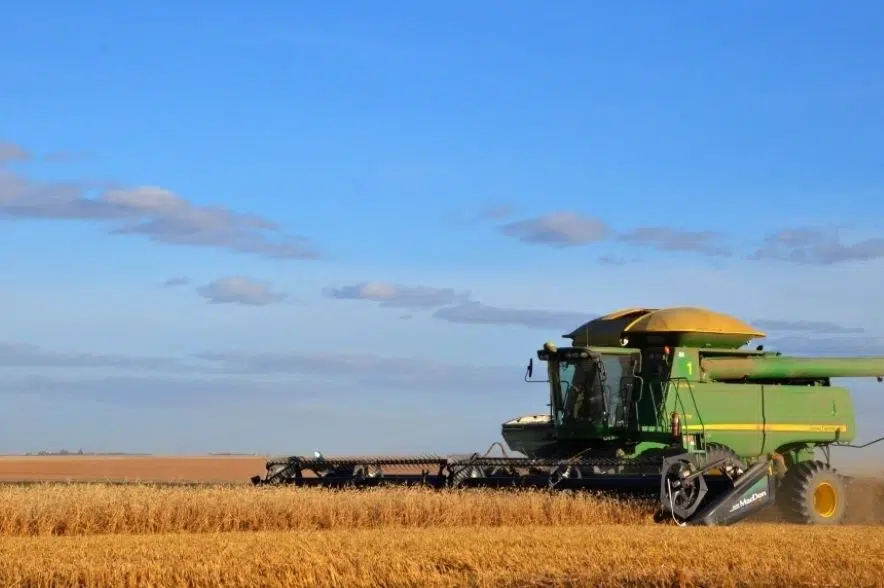Saskatchewan’s 2023 harvest is more than halfway done.
According to the weekly crop report from Saskatchewan’s Ministry of Agriculture, harvest is now 51 per cent done, up from 33 per cent last week. That puts producers well ahead of the five-year average of 34 per cent, and the 10-year average of 33 per cent.
About three per cent of all Saskatchewan crops are being used as a feed source this year, the report noted.
According to the report, harvest is furthest along in the southwest part of the province, at 81 per cent. Close behind is the west-central region at 60 per cent. Harvest is 49 per cent complete in the southeast, and 21 per cent complete in the northwest.
Fall cereal crops are all in the bin, while the report noted that harvests of lentils and peas are more than 90 per cent done.
When it comes to oilseeds, mustard is furthest along with 68 per cent of the crop in the bin. That’s followed by soybeans at 31 per cent and canola at 23 per cent. Canaryseed and chickpea crops are both about halfway through harvest.
“The diverse growing conditions across the province this year are apparent as producers are seeing varying yields for all crop types,” the crop report noted.
“The drought conditions in the southwest have led to yield averages well below the provincial averages. Meanwhile, the moisture received in the northeast has led to above-average yields.”
Provincially, yields for hard red spring wheat were estimated at 42 bushels per acre. Durum was estimated at 23 bushels per acre, barley at 53 bushels per acre, and canola at 31 bushels per acre. Mustard was estimated at 599 pounds per acre, lentils at 1,058 pounds per acre, chickpeas at 1,071 pounds per acre, and peas at 30 bushels per acre.
Despite “pockets of moisture” that moved across Saskatchewan this week, moisture levels remained largely unchanged. The report said cropland topsoil moisture levels were rated at 36 per cent adequate, 39 per cent short and 25 per cent very short. Topsoil moisture in hay and pasture land was rated at 29 per cent adequate, 40 per cent short and 31 per cent very short.
“Grasshoppers remain the primary concern for producers this week, while gophers remain an issue and waterfowl have returned to the northern fields,” the report noted. “Regions that received rain are concerned with sooty moulds resulting in downgrading of standing crops.”
The report noted that while harvest keeps farmers busy with swathing and combining, it can be a very stressful time for many. The report reminded producers to take safety precautions in all their work, including having fire mitigation “at the ready” and using extra care around power lines.
“The Farm Stress Line is available to provide support to producers toll free at 1-800-667-4442,” the report added.
More information on crop conditions can be found on the ministry’s website.











